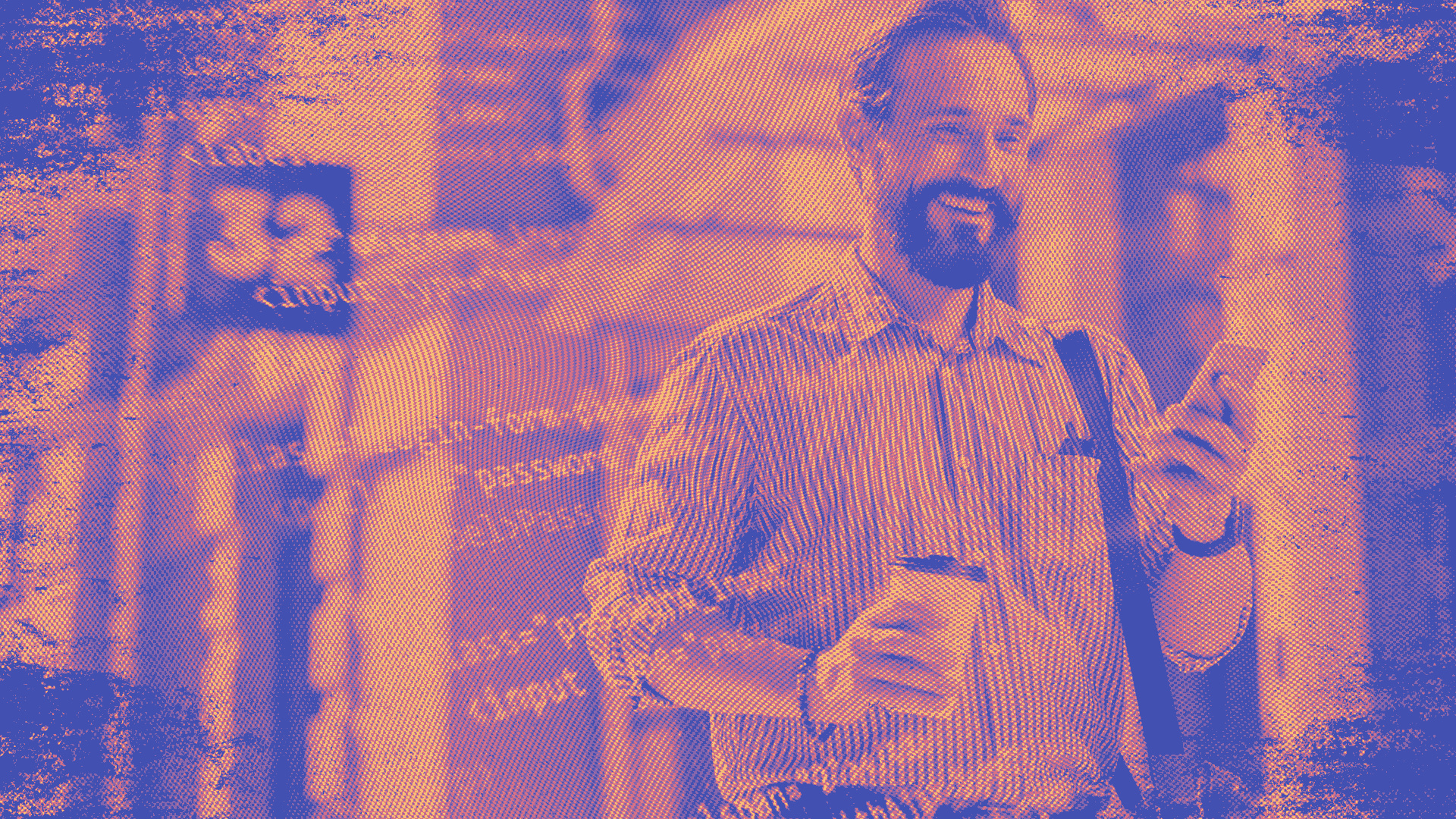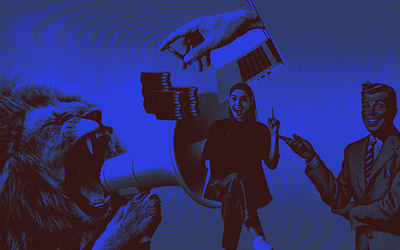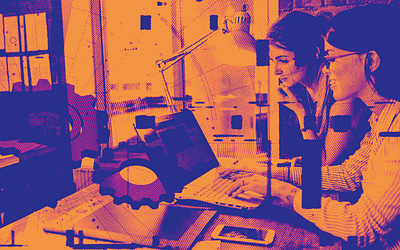Table of contents
Why psychology is central to conversion
Landing pages are more than just web flyers—they are places where choices are made. Every tap, scroll, or left form shows a mix of thoughts, feels, and acts. To turn guests into buyers, you need to speak to both their head and hidden moves that drive how they act.
Psychology is a map for how to get how users deal with not knowing, size up info, and make quick picks. It could be the colour of a button or how many good words you show, every bit of your design sends a message. When you get the mind tricks at play, you can make landing pages that push users to act, not just leave them lost in doubt.
The unseen drivers of user behaviour
Much of what makes a user pick on a page is not fully known to them. Experts have said for a long time that people use shortcuts in their minds—these are quick ways to make tough choices easy (Tversky & Kahneman, 1974). These shortcuts come from what they know before, what they expect, and the setting.
Add to this the role of how they feel, what they think the value is, and trust, and you start to see why a “pretty” page might not always make people act. In fact, pages that do well are often those built on purpose—pages that aim to make thinking easier and keep boosting the want to act at every scroll. Making people act isn’t a trick; it’s using the study of how people behave.
Visual hierarchy and the 50-millisecond rule
People make up their mind about a web page in less than a blink (Lindgaard et al., 2006). This quick choice decides if they’ll stay or leave. The setup and boldness of things like titles, buttons, and pictures—that’s visual hierarchy—shows where to look first and where to look next.
When the visual order is good, it makes choosing easy. Key points pop out; extra info comes right after. When it’s missing, folks feel lost or too much at once, even if they can’t say why. It’s like going into a tidy store versus digging through a messy yard sale—same stuff, but how it feels is way different.
Colour psychology and emotional triggers
Colours can make us feel things before we read any words. Red makes us feel urgent and can push us to act (Elliot & Maier, 2012). It is used a lot in sale signs and calls to action. Blue makes us think of trust and firmness, so it is all over finance and tech sites. Green often points to growth, health, or wins.
But the study of colours in this way is not so clear-cut. A red “Buy Now” button might do great for one brand, and yet seem too pushy for another. What’s key is the setting. The feel has to fit with the brand’s style and what the viewer aims to do. It’s not just about picking the “best” colour—it’s about picking the right one for your folks, when they decide.
The paradox of choice: Why less is more
Giving too many options may feel kind, but it often goes wrong. The choice trap, named by a mind doctor, Barry Schwartz, in 2004, shows too many choices can freeze the mind. Instead of helping users, they feel too much, hurting both numbers and happiness.
A full page—with many calls to act, long forms, all over deals—asks a lot from the mind. Each new thing makes the brain work harder, the work needed to take in what we see. To get more, show less. Make your words clear. Focus on one aim. Make users sure they are right where they need to be.
Creating mental shortcuts with visual cues
Well-placed icons, bold subheadings, and directional cues (like arrows or images of people looking towards your CTA) can help users make quicker decisions. These are called affordances—design elements that suggest how something should be used (Norman, 1988).
Consider how checkmarks in a benefits list suggest approval, or how star ratings immediately imply quality. These cues tap into pre-learned behaviours and allow the brain to “chunk” information quickly. In UX psychology, this is known as cognitive offloading—helping the brain process more with less effort. A great landing page doesn’t tell the user what to do; it shows them, quietly and confidently.
The role of social proof in conversion
When folks come to your site, they often think, “Can I trust this?” Social proof gives a strong yes. For example, customer words, stars, company logos, or trust marks show that others have tried this and liked it.
The strength of social proof comes from the idea of fitting in. People do what others do, mostly when they are not sure. A good review or stars under a product picture do not just fill space—they push people to follow and feel less risk. If 10,000 people have got your app, the 10,001st person likely feels good to do the same.
How authority bias affects decision-making
Past the group’s know-how is the pull of top people. Power wrong shows that we think more of what key people or big names say. This is why words from a top school teacher or a “seen in Forbes” mark can big change how sure a user feels.
It’s not only about showing off trust—it’s about moving sureness. A web page that hints “we know this, we are safe” cuts down push-back. Examples, proofs, news nods, and expert papers all show deep skill, pushing the unsure user to trust—and act.
Cognitive fluency: Making content effortless to read

People should not have to think hard to get what you are offering. The term “cognitive fluency” means how easy it is to take in info. When stuff is easy to read or take in, it seems more true and you can trust it more. If your main page is full of hard words, unclear titles, or too smart text, you’re making it hard on the user’s mind.
So, try to be clear rather than smart. Use easy words, short sentences, and be straight with what you want people to do. Split up text with lists and strong words. And keep in mind: clear content builds trust—it makes people remember and act. When you’re not sure, get someone who’s not an expert to read your page. If they stop or struggle to see, your content needs to be made clearer.
Time and place are key. Studies show that CTAs high on a page get fast clicks, while those spread out on long pages boost will. Don’t just use one. Put them where the drive is high—after good words from users, prices, or lists of perks.
Framing techniques that nudge action
Adding words like “Limited offer,” “Only 2 left,” “Ends tonight” makes people fear they will miss out. This hooks into the scarcity rule, where stuff seems more worth it as it gets hard to find. If the rush feels real, it drives action well. But made-up scarcity? It just cuts trust.
How you share info is as key as what you show. This is what we mean by framing. Say, telling folks they’ll “get £200” feels more fun than “avoid losing £200,” even if the end is the same—this happens due to a thing called loss hate.
Framing can change how we see things in big ways. “Join 12,000 happy folks” sounds nicer than “Sign up today.” “Last 3 seats left” makes us feel we must act now due to low supply, while “Most liked pick” uses group follow. Small word changes make big feel changes. And feelings, not thought, guide most picks online.
What makes a call-to-action irresistible
The simple call-to-action (CTA) is where mind games meet results. At its best, a CTA brings a feel of need, clearness, and fit all at once. Not just a plain “Submit” or “Learn More”, good CTAs show what the user wants—words like “Get My Free Audit” or “Start Saving Today” focus on the gain, not the steps.
In the mind, this works since people like to act when they feel they are in charge. By using words like “Start my trial”, and happy endings (“Unlock access”), you cut down on confusion and grow the user’s care. The CTA is not just a button; it’s a link from plan to doing.
Placement, wording, and urgency cues
Time and place are key. Studies show that CTAs high on a page get fast clicks, while those spread out on long pages boost will. Don’t just use one. Put them where the drive is high—after good words from users, prices, or lists of perks.
Adding words like “Limited offer,” “Only 2 left,” “Ends tonight” makes people fear they will miss out. This hooks into the scarcity rule, where stuff seems more worth it as it gets hard to find. If the rush feels real, it drives action well. But made-up scarcity? It just cuts trust.
Using behavioural data to tailor experiences
People like it more when things are made just for them. This isn’t only a guess in marketing—it’s proven by brain studies. Research in how marketing affects the brain shows that when content is made personal, it lights up parts of the brain that make us feel good, helping to build trust and a strong link. If a web page talks to you by your name, where you’re from, or what you like to look at, it feels right—and feeling right makes you act.
Tools that track how you act let you show content made just for that person based on their past visits, how they got to your page, or the tool they are using. For instance, people who come back might get a thank you price cut, while first-timers get a basic guide. These small moves make it feel like a chat for one, even in a space meant for many.
The Zeigarnik effect and unfinished tasks
Ever thought about why folks start a quiz, grab a checklist, or keep going with sign-ups? That’s the Zeigarnik effect in play. It is a mind trick where people keep in mind tasks they haven’t finished more than the ones they have, making a drive to get them done.
Landing pages use this trick with step-by-step showing. Forms that have many steps, bars that show progress, or tags like “Step 1 of 3” all use this push. Once a person starts, their brain pushes them to not stop. The key is to make the start easy and gain speed. Remember, each click is a tiny mind commit.
Emotional resonance and storytelling
When making choices, we let feelings win over logic, most times. This is because a key part of our brain, the emotional center, plays a big role in choosing. Telling stories hits this brain spot right on. A good landing page does not just list good things; it tells a tale that fits what the user feels inside.
Think of a page that sells bookkeeping software to people who own small businesses. Instead of just saying it has “automated reports”, it works better to put it like: “Spend less time with numbers and more on growing your dream.” This new way of saying it touches the heart, matching how the user really feels.
Embedding micro-stories into your landing page
You don’t need a long story to make people feel. Small tales—like reviews, words from the maker, or tales of users—work very well. They let people picture themselves using your thing. This is called “story pull”: the more someone sees themselves in a tale, the stronger the hook is.
When you design, putting a real person’s photo next to a quick win (“We grew 30% in three months with Dool”) can work better than a thick study. Feelings are in the small things. The more someone can relate, the stronger it hits.
The 8 elements you’re probably missing
Let’s consolidate the psychological levers most often overlooked on landing pages. These are the subtle yet impactful elements that, when missing, silently kill conversions:
- Clear visual hierarchy – Guide the eye, don’t compete for attention.
- Cognitive fluency – Use plain language; make reading effortless.
- Social proof with depth – Go beyond logos; add human voices.
- Authority signals – Endorsements, awards, press features.
- Emotionally framed messaging – Tap into hopes, fears, and desires.
- Progressive engagement – Use the Zeigarnik effect and step-based tasks.
- Urgency and scarcity cues – But only when genuine.
- Personalisation hooks – Speak to behaviour, not just demographics.
Real examples and data-backed insights
Brands such as Airbnb and Duolingo do well here. Airbnb pulls in users with real host tales and local photos. Duolingo keeps up the drive with small steps forward and fun faces. Both use the mind’s ways in their design—and it shows in how well they do.
Per Unbounce’s 2023 report, pages that show stories with photos did 34% better in turning visits to gains than those with just text remarks. And pages made just for the user? They had folks stay on them 202% longer (HubSpot, 2022).
Turning psychological insight into design action
Great landing pages don’t just look good or use smart words. They are built on deep ideas about how people think and act. Each design, word, and click can either build trust or cause doubt. As a marketer, your job is to make experiences that calm doubts, stir feelings, and lead users to act gently but surely.
Knowing how the mind works is not just nice to have—it’s a must. There’s a tough fight for attention, and the line between leaving and staying is very thin. The good news? When you use the science of behavior on purpose, your landing page doesn’t just look good. It works better.
Why your landing page is never truly finished
Here’s the real deal: a landing page is always a work in progress. It’s an ongoing test. As users change what they want, design styles move, and rules for search engines get updates, your method needs to adapt. But if you base your plans on real people’s thoughts and actions, you’ll stay close to success.
In the end, great pages don’t just grab people’s eyes—they keep them, win them over, and make them take action.
FAQs
What psychological principles increase conversions?
Principles such as social proof, loss aversion, authority bias, and cognitive fluency are known to boost conversions. They reduce uncertainty and help users feel confident about taking action.
How can colour influence user behaviour on a landing page?
Different colours evoke specific emotional responses. For instance, red may create urgency, while blue fosters trust. The impact depends heavily on context and brand identity.
Why do fewer options often result in more conversions?
Too many choices lead to decision fatigue, a phenomenon where users become overwhelmed and fail to act. Streamlined pages reduce cognitive load and guide focus, improving conversions.
What is the most overlooked element of a landing page?
Often, it’s framing and message clarity. Brands may focus on design but forget how subtle changes in wording and structure can drastically alter perception and outcomes.
How can I apply neuromarketing to my landing page?
Use emotionally engaging headlines, progress indicators, and visual storytelling. Leverage principles from behavioural psychology—such as the Zeigarnik effect and scarcity—to guide action more effectively.







